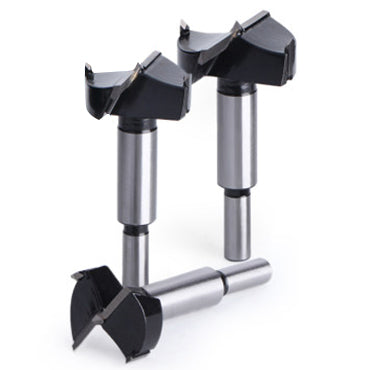When choosing a drill bit for wood, there are a few factors to consider to ensure proper drilling and avoid splintering or damaging the wood. Here are some tips to help you select the right drill bit for wood:
1. Wood Type: Different types of wood have varying characteristics, including hardness and density. So, consider the type of wood you'll be drilling into. Softwoods like pine or cedar require different drill bits compared to hardwoods like oak or maple.
2. Drill Bit Type: There are several types of drill bits suitable for wood. Here are a few common ones:
a. Brad Point Bit: Brad point bits have a sharp, centered point that helps to position the bit accurately and reduce wandering. They also have spurs or cutting edges on the sides to ensure clean entry holes without splintering.
b. Twist Bit
: Twist bits are the most common and versatile drill bits. They have a spiral shape and are suitable for general-purpose drilling in wood. However, they may cause some splintering, especially when drilling through the backside of the wood.
c. Forstner Bit : Forstner bits are ideal for drilling clean, flat-bottomed holes with smooth sides. They excel at drilling larger diameter holes and are often used for creating recesses, mortises, or dowel holes.

d. Spade Bit: Spade bits, also known as paddle bits, have a flat, paddle-shaped cutting tip. They are effective for drilling larger diameter holes in wood, such as for installing door locks or running cables.
e. Auger Bit
: Auger bits are designed for drilling deep holes in wood. They have a spiral shape with a screw-like thread that helps to remove wood chips efficiently. Auger bits are commonly used for tasks like drilling holes for dowels or creating holes for large screws.
3. Bit Size: Consider the diameter of the hole you need to drill. Select a drill bit with the appropriate size to match your desired hole diameter. It's generally recommended to start with a smaller pilot hole before using a larger bit for drilling larger holes.
4. Shank Size: Ensure that the drill bit's shank size matches your drill's chuck size. Most drill bits have a standard round shank that fits into a drill chuck securely.
5. Quality: Invest in high-quality drill bits made specifically for wood. They tend to have sharper cutting edges and are manufactured with the appropriate design and materials to withstand the demands of wood drilling.
Remember to always wear appropriate safety gear, such as safety glasses, when drilling into wood. Additionally, it's a good practice to test the drill bit on a scrap piece of wood before drilling into your actual workpiece to ensure the desired results.
By considering the wood type, drill bit type, size, and quality, you can choose the right drill bit for wood and achieve clean, precise holes without damaging the wood fibers.
